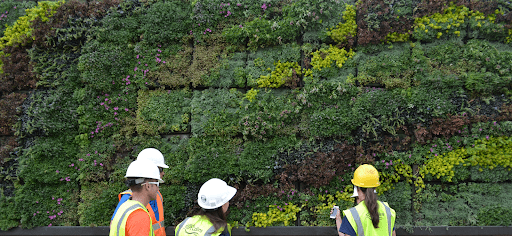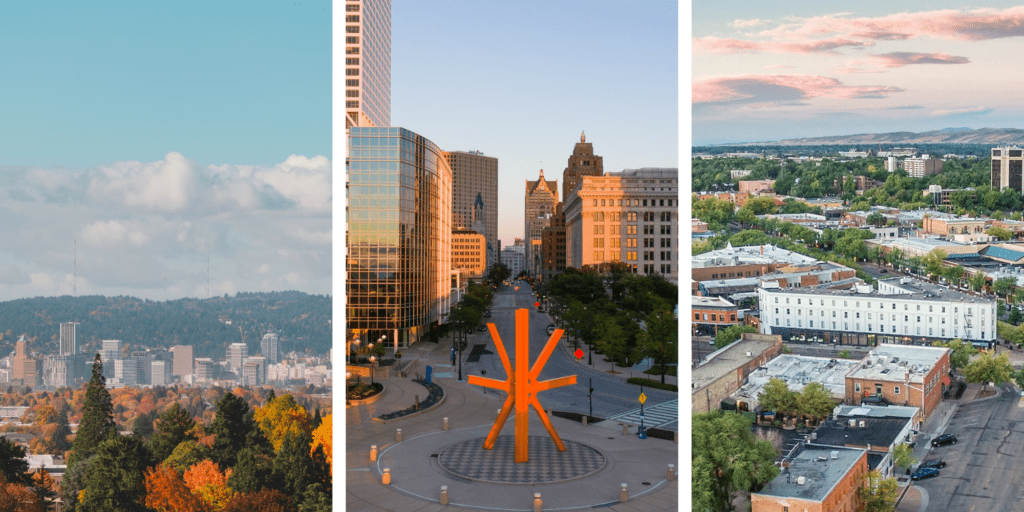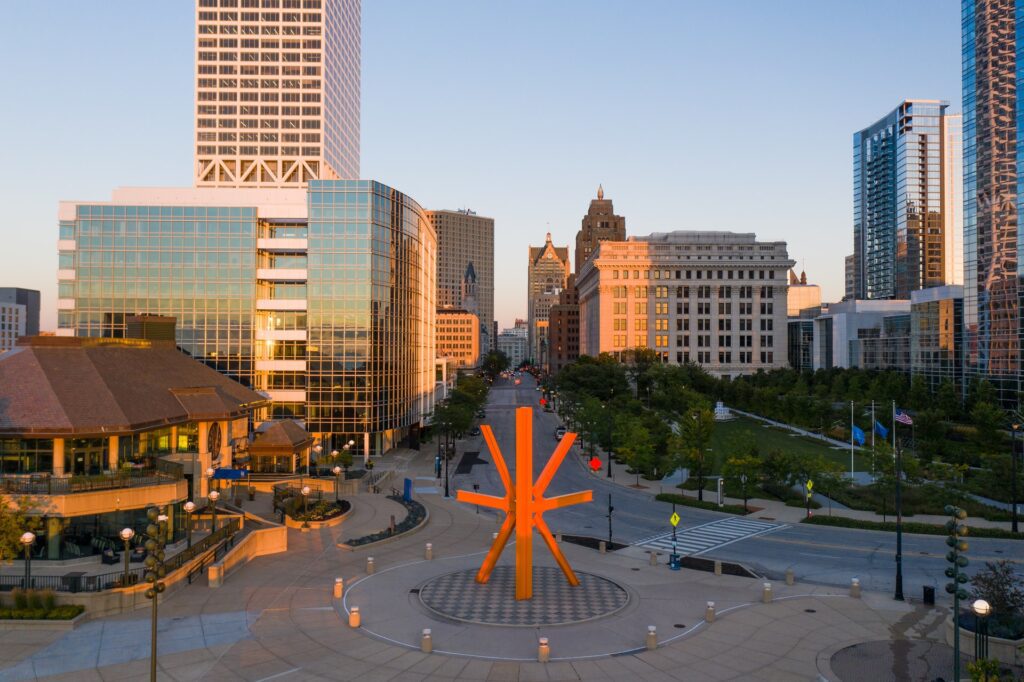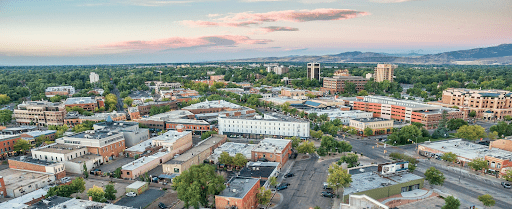Introduction to Nature-Based Solutions
Nature is the life-support system for our society. In this “super year for nature”, when the global community will seek to provide an ambitious deal for nature, we are inspired by stories of how local governments are leading the way in safeguarding their communities by implementing nature-based solutions, connecting residents to nature, restoring ecosystem services and preserving biodiversity for both human and nonhuman species. ICLEI’s Nature Pathway aims to “protect the ecosystems that underpin local economies and the resilience of our communities” below we highlight three ICLEI USA member governments that embody this vision through innovative projects. Explore how Portland, Oregon; Milwaukee, Wisconsin; and Fort Collins, Colorado tackle the complex issues surrounding natural capital and the degradation of ecosystem services in a rapidly urbanizing world.
The City of Portland, Oregon: Mainstreaming Nature-Based Solutions into Planning
Background
Located in the United State’s Pacific Northwest region, Portland is situated between two significant rivers: the Willamette and the Columbia. These rivers hold both economic importance, as they provide access to city ports, and ecological importance. Native salmon and steelhead can be found in 125 of the 300 miles of stream connections. The rivers are more than just a migration corridor for salmon, in fact, the Lower Willamette River is an important rearing and spawning habitat for salmon and steelheads. The relationship between the city, the surrounding water, and the fish and wildlife is a connection that requires balance and care.
The Bureau of Environmental Services (BES), one department of Portland’s government collaborating with nature, has, over the decades, evolved to implement nature-based solutions into its problem-solving strategy and prevention.
From Gray Infrastructure to Nature-Based Solutions
Portland’s evolution towards sustainability began in 1991, when the City undertook a progressive plan to implement gray infrastructure, The Big Pipe, to help solve the combined sewer systems overflow problem. Overflows pose significant water-quality threats to people, rivers, fish, and wildlife.
This project was transformational, igniting the incorporation of green infrastructure into more projects and problem-solving strategies. After the initiation of the Big Pipe Project, Portland, in the 1990s, began experimenting more with green infrastructure. Learning from European cities, the City was looking for ways to incorporate plants and soil into the built environment to ultimately reduce the amount of managed stormwater.
The Big Pipe set up the opportunity for the City to implement Portland’s Watershed Management Plan in 2005. The plan’s goal is to protect natural resources, restore critical ecosystems, and implement stormwater solutions that integrate the urban area with the natural environment. Subsequently, the Watershed Management Plan created the foundation for projects like the Tabor to the River program and Crystal Spring Creek Project to grow to fruition and succeed.
The Crystal Creek Project aimed to improve water quality and enhance the habitat for the entire Crystal Spring’s system. Due to the increased summer temperatures, the City identified Crystal Creek as an impaired waterbody threatening salmon and steelhead, which require cold water to survive, but also native plants and other wildlife.
The project used green streets and pervious pavements to manage and reduce stormwater runoff, keeping that water away from the sensitive creek habitat. Furthermore, they restored about 50% of the stream bank and installed new vegetation, trees, and large wood.
The 2010 Tabor to the River program sought to integrate watershed health and social infrastructure into a large-scale capital project to develop a healthy urban watershed by:
- Supporting natural functions and a reliable sewer system:
- Integrating watershed approach into a system capacity and pipe rehabilitation project
- Implementing solutions to address multiple objectives of watershed health
- Improving water quality and hydrology
- Sewer system improvements
- Healthy native vegetation
- Vibrant livable communities
- Developing a replicable framework inclusive of education
The program proposed an actionable, integrated approach in 35 project areas across Portland over a 10-15+ year period:
- Plant 3,500 street trees
- Add 500-600 sustainable stormwater facilities
- Repair or replace 81,000 feet of sewer pipe
- Remove invasive plants from key areas
- Encourage community action on private property
- Community education and develop partnerships
Lessons Learned
While these two projects are different in their initial goal, they both focus on water health for the community, ecosystem, and fish and wildlife through the implementation of nature-based solutions. These projects showed it is possible to implement green infrastructure and natural area protection in climate change preparation as it has multiple benefits that appeal to each governmental department. Portland is a prime example of integrating green infrastructure and nature into its solutions strategy and implementation.
During “Nature-based Solutions in Cities, Part 2: Mainstreaming Nature-Based Solutions into Planning” webinar, Matt Burlin with the City of Portland Environmental Services said, “Where all this really matters most is how we think of natural resources and biodiversity and how we value those things when we talk about reducing the risk of stormwater problems […] We need to redefine our assets to include streams, wetlands, estuaries, and urban canopy and understand the type of problems and how they can affect the things we care about and make sure that we are including streams, and biological communities in the things that we care about.” Read Portland’s 2035 Comprehensive Plan that incorporates key biodiversity elements.
City of Milwaukee: Three Programs Bringing Nature into Urban Living
Background
The City of Milwaukee’s Environmental Collaboration Office (ECO) develops and implements equitable and practical solutions to improve residents’ lives and the economy by protecting and restoring the community’s natural ecosystems. As a part of its mission, the ECO oversees the implementation of the City’s Refresh Milwaukee sustainability plan. Through collaboration with community members, nonprofits, educational institutes, global partnerships, and private entities, the ECO implements programs dedicated to integrating nature back into the city.
The City’s efforts to integrate nature into the community are highlighted through three innovative programs: Water Centric City, HOME GR/OWN- Neighborhood Pockets Parks, and Eco-Industrial Districts.
Water Centric City
Through the Water Centric City initiative, the City of Milwaukee is applying water science and implementing green infrastructure throughout the community. This program showcases the City’s leadership in water management through sustainable and resilient efforts. The City follows the Seven Principles of the Water Centric City:
- Water Leadership
- Arts, Talent, Culture & Education: A Gathering Place By The Water
- Water Technology
- Applied Water Research and Policy
- Green Infrastructure and Climate Adaption
- Fishable, Swimmable Rivers and Water Bodies
- Sustainable & Healthy Water Supply
The City partners with communities across the globe for water leadership, such as Great Lakes St. Lawrence Cities Initiative, UN Global Compact Cities Programme, and Water Centric City. Additionally, the City partners with the University of Wisconsin School of Freshwater Science to improve water quality and identify point pollution sources.
Passionate about switching gray spaces into green spaces, the City’s Green Infrastructure Plan outlines opportunities to use parking lots, roofs, and schoolyards for green infrastructure opportunities. The new plan outlines the benefits of green infrastructure, such as stormwater management and public health, requires green infrastructure for all large redevelopments, and provides new landscape standards and incentives for parking lots. Through public and private partnerships, the City has implemented city-wide green infrastructure projects to bring nature back into the City. For example, the City partnered with the Milwaukee Public Schools to remove concrete playgrounds and add green schoolyards, such as the Longfellow Community School (see results below).
The HOME GR/OWN: Neighborhood Pockets Parks
The HOME GR/OWN program transforms vacant lots into sustainable outdoor spaces. These green spaces serve as a hub for community events, environmental education, and resident enjoyment.
The Fondy Park is a prime example of the City’s home-grown program to convert vacant lots into eco-pocket parks. The park helps manage stormwater and attract pollinator species on-site through bioswales, native prairies, and vegetation. Additionally, Fondy Park protects the health of Lake Michigan by collecting approximately 83,000 gallons of run-off during major storm events. This park serves as a space for residents to enjoy nature and hosts a variety of events, such as farmer markets.
Eco-Industrial Districts
The City of Milwaukee converted former brownfield sites into Eco-Industrial Districts. The program primarily converts sites for industrial use by incorporating green infrastructure, utilizing habitat restoration, and integrating them into neighborhoods. There are four districts throughout the City which are Menomonee Valley, Century City, Reed Street Yards, and Harbor District.
The Eco-Industrial Districts are examples of city economic functions working closely with restorative ecology. The Menomonee Valley project provided over 1,300 jobs and consists of 60 acres of stormwater park. Throughout this project, and in other eco-industrial districts, the City used sustainable building designs and viewed nature as an asset. The City shifted from the paradigm of using land and moving on to eco-industrial districts that support industry and utilize natural ecosystem services.
Lessons Learned
During the “Nature-based Solutions in Cities, Part 1: Introduction to Nature-based Solutions” webinar, the City of Milwaukee’s Director of Sustainability, Erik Shambarger shared, “As we try to build a movement of people that care about the environment, research shows you have to connect people physically with nature if they are going to care about bigger issues like climate change. It is important to connect people with nature.” To learn more about the City of Milwaukee’s nature-based solutions, explore the Environmental Collaboration Office programs.
The City of Fort Collins: Nature in the City Program
Background
The City of Fort Collins’s Nature in the City Program emerged in 2012 as a response to development patterns and trends at local and national levels. With the increased preference for urban living and development trends, the City of Fort Collins began to assess how residents were experiencing nature. The City received a spike in development submittals throughout 2012 and 2013, primarily located in urban settings that many residents used as open spaces and served as a home to wildlife. With this in mind, the Planning Services Division of the City with City Planners wondered how to better integrate nature into development projects.
As a result, the City of Fort Collins focused on nature-based solutions to preserve and maintain connectivity and access for residents and wildlife. To bring this to life, the City Council adopted the Nature in the City Strategic Plan in 2015 and began implementation in 2016. Since then, the City of Fort Collins has continued to roll out policies, projects, and programs dedicated to integrating nature throughout the City for both people and wildlife.
Nature in the City: The Process, Tools, and Results
The City of Fort Collins created and implemented the Nature in the City (NIC) to create a connected, accessible open space network for the community that provides a variety of experiences and habitats for residents, wildlife, and plants. The City developed the NIC through a three phase process to ensure residents have immediate access to nature.
- Phase 1: Conducted an inventory and assessment of existing conditions and robust public outreach plan (2012-2013)
- Phase 2: Developed a strategic plan (2014-2015)
- Phase 3: Implemented action items (2016+)

The City had a data driven approach for NIC to determine goals and strategies. To assess wildlife connectivity, the City studied five indicator species, specifically butterfly and bird level, across 166 sites. The City identified where the indicator species were and where they would go within the urban context to map a network throughout the urban setting. Additionally, the City analyzed vacant lands and conserved lands to determine opportunities to work with the development community to increase nature throughout the City.
From the results of data driven approach, the City determined three goals for NIC:
- (1) Easy access to nature in 10 min walk,
- (2) High quality natural spaces, and
- (3) More diverse urban landscape.
The Natural Areas Department and Planning Services both oversaw and collaborated on the NIC program. The City found critical tools for success were capital projects, long-range planning and regulation, internal and external partnerships, habitat monitoring, and education, outreach and training.
The City worked with several sectors to implement NIC community projects, such as:
- Educational institutes (e.g., Bennett Elementary Learning Garden)
- HomeOwner Associations and Churches (e.g., Skyview Nature Area)
- Nonprofits (e.g, Murphy Center)
- City Collaboration (e.g., Living Wall)
The NIC program also has resources to support residents’ efforts to increase nature throughout the City, For example, the Xeriscape Incentive Program incentives homeowners to convert high-water need landscapes to low-water need landscapes. Through City-led initiatives and public engagement, the NIC program encourages integrating nature into urban life, planning, policy, research, and practice.

Lessons Learned
The innovative Nature in the City (NIC) took several years to develop and continues to be a successful program. Upon reflection, the City of Fort Collins staff highlighted the following learned lessons from NIC:
- Communicating expectations and reasons for projects is critical for public engagement.
- Defining nature in different ways to connect to varied values of nature.
- Transforming landscapes and aesthetics with open communications.
- Leveraging the capacity of staff through various departments helps with workflow.
- Managing internal and external relationships is paramount for success.
- Identifying and tracking long-term maintenance and management.
- Working with local developers and educating them on the importance of nature through development.
During “Nature-based Solutions in Cities, Part 3: Fort Collins, Pioneer City and the CitiesWithNature Journey” webinar, Stephanie Blochowiak, Environmental Planner at the City of Fort Collins said, “Fort Collins nature in the city reflects an interdisciplinary effort and Fort Collins’s commitment to the triple bottom line, taking into account the economic, environmental and social impacts of nature.” Explore the City of Fort Collins’s Nature in the City platform to learn more.
Summary
Nature is an integral part of our global ecosystem. An ecosystem that these three case studies have demonstrated a mutual, symbiotic relationship between nature and the urban-built environment. These cities have shown their increasing understanding of the intersection of biodiversity, health, equity, and climate change. If your community wants to learn more about how they can incorporate nature and biodiversity into their local planning process, sign up for updates about our upcoming Biodiversity Bootcamp from August to September 2022. The 6-part “Biodiversity Bootcamp” is a learning-and-leadership virtual training series that opens a pathway for U.S. communities to engage with the UN Convention on Biological Diversity proceedings unlike ever before.


